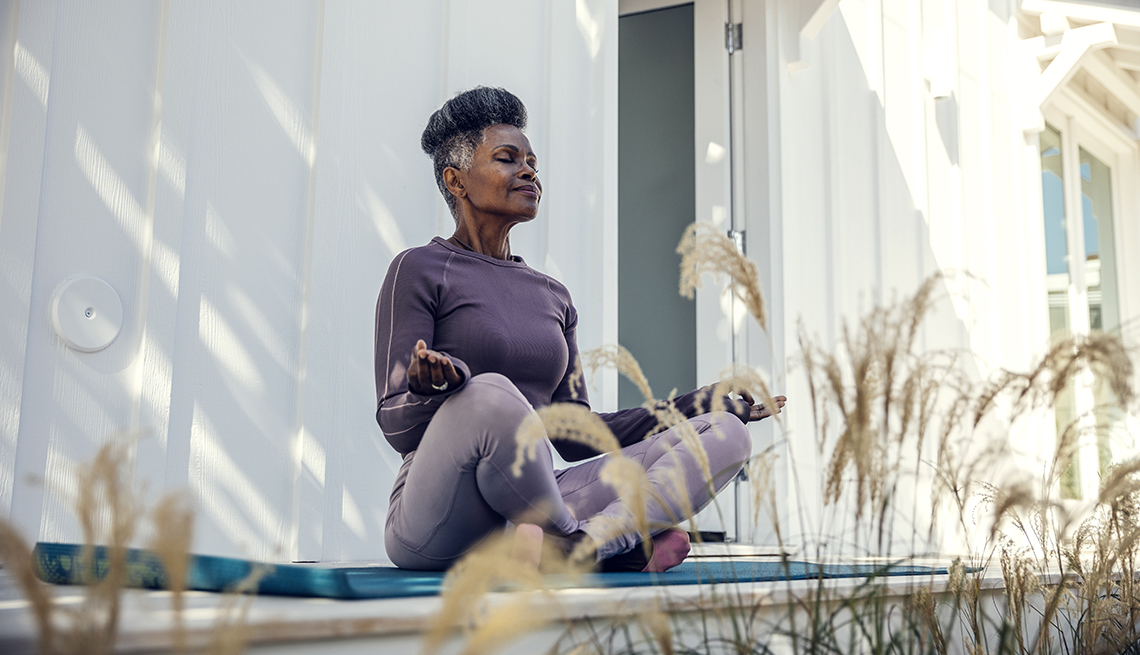
- Select a language for the TTS:
- UK English Female
- UK English Male
- US English Female
- US English Male
- Australian Female
- Australian Male
- Language selected: (auto detect) - EN
Play all audios:
Older Americans who are living alone without a partner or children are largely content with their lives. A new AARP survey shows they embrace the freedom of being a “solo ager,” but many are
increasingly concerned about their long-term care and often are unprepared for the future. AARP explored the demographics, experiences and attitudes of this group — which comprise 10% of
the age 50-plus population — in a national survey of older adults conducted in November 2022. Living alone is equated with being independent (55%), satisfied (41%), and happy (30%), the
respondents said. About half (49%) of solo agers say they are extremely or somewhat optimistic about their quality of life as they age, compared to 59% of older Americans overall. The
percentage of solo agers who are pessimistic has doubled since 2020, from 12% to 25%. (The remaining respondents didn’t have strong feelings either way.) The research reflects the ups and
downs of living alone. The best part is the freedom, according to 41% of respondents. The worst aspect of going solo? Loneliness (36%). GROWING CONCERNS Solo agers’ worries about aging have
intensified in recent years and often are higher than the 50-plus population in general, AARP discovered. Solo agers are most concerned about losing their independence and physical strength
(78%), being in poor health (72%), and losing their memory (71%). Also front of mind for them is the possibility of running out of money, being without friends or family, affording paid
care, and not being able to stay in their home. AARP reports those age 50-plus living alone are increasingly anxious about falling victim to a scam (46% vs. 37% in a 2020 survey) and whether
their medical wishes will be carried out (45% vs. 39%). Also, there is growing concern over managing finances and having their possessions distributed as they wish. Those who live alone
rely on their social networks for support. Nearly two-thirds of solo agers said they have friends to lean on when problems arise. Still, the AARP survey reveals gaps in assistance. Just
about one-quarter have someone to call for help with daily needs such as cooking, cleaning, shopping, or managing day-to-day expenses. Almost one-half (46%) of solo agers are worried about
having enough emotional support as they age. The majority of solo agers have not planned for ongoing living assistance and do not have someone who could help, according to the survey. In
addition, the survey showed solo agers to be lagging behind in arranging for alternative housing and estate planning. Nearly all (98%) of solo agers live in a house or apartment. AARP found
most (95%) have not made a reservation in a community for adults, searched for a cheaper or easier place to live (82%), or modified their home to make it easier to live (81%). Just about
four in 10 respondents have a will, trust, living will, or advance directive. While 81% of adults 50 and over have designated beneficiaries for their financial accounts, just 60% of solo
agers have done the same. SOCIAL CONNECTIONS AND PRIORITIES Most people know a solo ager (60%) and, among those, check in on them regularly (81%). Compared to 2020, the portion of adults
50-plus expecting to help support people who live alone in this manner in the future has more than doubled (from 12% to 30%). Indeed, about half of solo agers have five or more friends (52%
vs. 66% for adults 50-plus) and 57% (lower than the general older population) are content with the number of friends they have. Women are more satisfied than men with their number of
friendships. More solo agers expressed feeling left out or isolated from others than other age 50-plus adults. Pre-pandemic, they were less likely to engage in activities with friends and
family or belong to faith-based organizations, neighborhood associations, service organizations, and veterans’ groups than the overall older population. The pandemic did change some
sentiments and priorities for solo agers. Over one-third say their connections with family (35%) and friends (36%) are more important now compared to pre-pandemic. About half of solo agers
feel differently about living alone as a result of the pandemic with those feelings split between positive and negative. METHODOLOGY The findings were based on a survey conducted for AARP
from a national sample of 632 American adults age 50 and older and 1,372 Americans age 50-plus who were solo agers (i.e., not married, not living with a partner, no living children, and live
alone). The interviews took place November 9 to 29, 2022, by web and phone. The sample was weighted to nationwide demographics from the 2020 Current Population Survey. For more information,
please contact Stephanie Childs at [email protected]. For media inquiries, contact [email protected].








